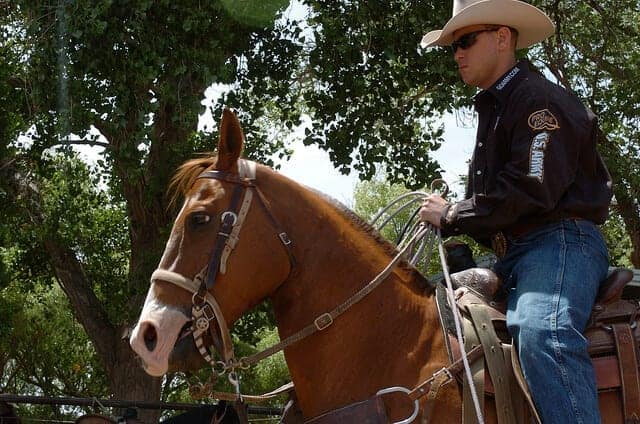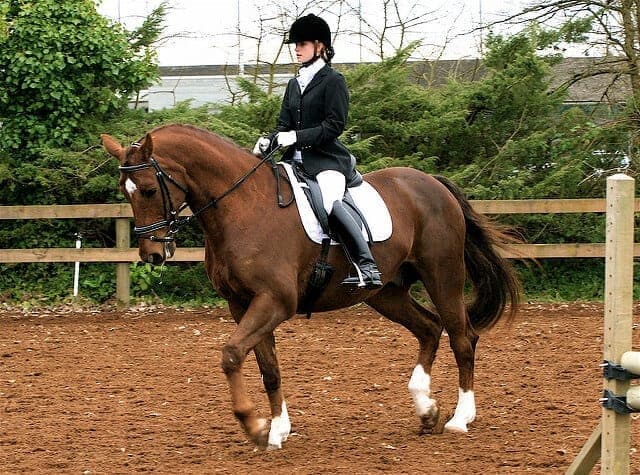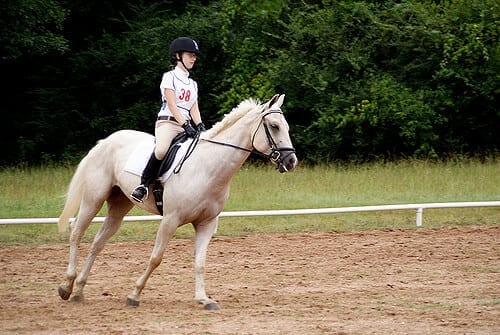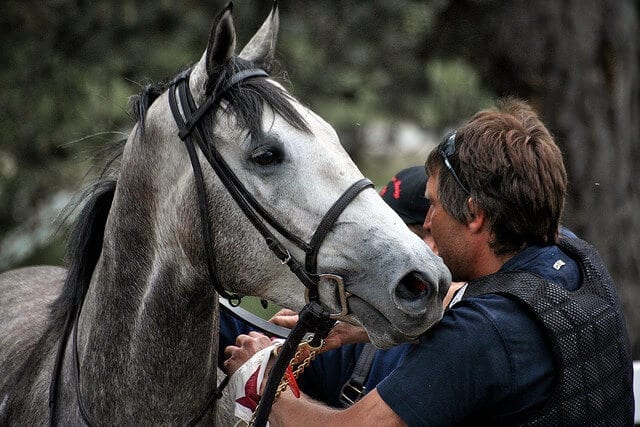Many riders strive to have their horses work on the bit. By asking your horse to lower his head while you maintain contact with the bit, you can instantly communicate with the horse simply by tightening your fingers on the reins. But many horses resist working on the bit. There are five common reasons why.
Your Horse Needs Dental Work

Have your horse's teeth been floated lately? If your horse's teeth have developed sharp edges or are uneven, it may be painful for him to hold the bit in his mouth. Make sure that your horse receives dental attention at least every year, and have your vet out to check him over if he suddenly starts resisting the bit.
The Bit Irritates Your Horse

It's also possible that the bit you are using really isn't a good fit for your horse. Your bit needs to fit your horse's mouth, both in terms of length and in the size of the port. If a bit is too large or too severe for a horse's mouth, he will be in constant discomfort and will resist working on the bit.
Your Horse Hasn't Been Trained

Before you ask your horse to work on the bit, you'll want to find out if he's ever been trained with this technique. If your horse is young or relatively green, it's entirely possible that he doesn't know what your signals mean. You may choose to train him yourself if you're capable, or may want to bring in a professional trainer to help you.
Your Horse Is In Pain

If your horse consistently raises his head in order to evade the bit, he may be suffering pain, and it isn't necessarily being caused by the bit. Horses dealing with saddle fit issues, sore backs, or pain elsewhere in their bodies, such as in stomach ulcers, frequently do not like to maintain bit contact. If your horse is sore in his back, it may be difficult for him to lower and extend his neck because of the discomfort that it evokes.
You're Sending Mixed Signals

Often, it's the rider who causes the horse to resist working on the bit. If you're just learning how to ask a horse to work on the bit, it's important that you have a trainer watch and instruct you. When a horse works on the bit, you need to have quiet hands. Moving your hands around, fussing with the reins, and even shifting your leg position may all disrupt your contact with the horse, leading to him moving his head and evading the bit.
Horse Courses by Elaine Heney
- Listening to the Horse - The Documentary by Elaine Heney & Grey Pony Films
- Shoulder In & Out Training for better balance, bend & topline development with your horse
- Over 110+ Polework Exercises & Challenges to Download
- Dancing at Liberty & Creating Connection with Your Horse (11 lessons) - Grey Pony Films
With a bit of work and some experimentation, you can likely get your horse to work on the bit. If not, then be sure to consult a professional trainer to help you.





Leave a Reply